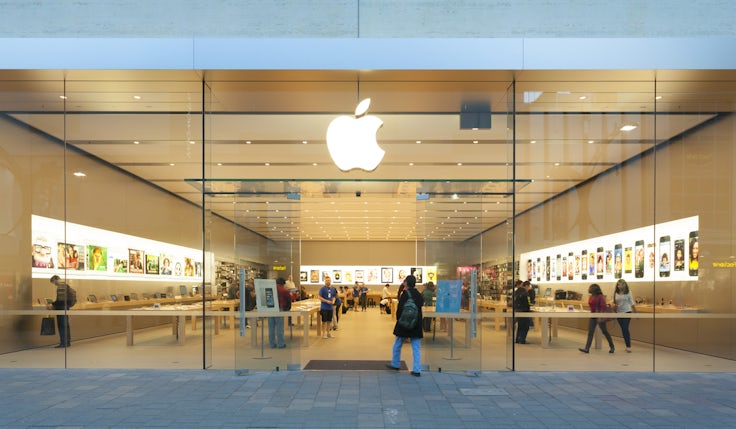UK firms ‘lack vigour’ as brand value lags behind global rivals
UK companies grew just 1% in brand value over the past year, compared with 22% growth in 2021, according to BrandZ’s latest UK ranking.

Against a backdrop of a crippling cost of living crisis, the value of the UK’s top brands risks stagnation, according to the 2022 Kantar BrandZ UK top 75 ranking.
UK-headquartered brands in the top 75 have grown just 1% in total value since 2021, way behind the global ranking which grew by 23%. The only UK brand to make the global ranking earlier this year was Vodafone, which came in at 65th place. In contrast, UK brand value grew by 22% last year as businesses sought to bounce back from Covid.
The top three brands on the list, Vodafone (£33bn), HSBC (£18bn) and Shell (£17bn), remain the same as last year, with the top 10 equally consistent. The only change is Barclays (£6.9bn), which has claimed 10th spot after not making the 2021 top 10.
“It’s not unusual for a brand to drop a couple of places or go up a couple, because actually they’re quite close together in terms of brand value,” explains Adele Joliffe, head of the brand domain consultant team at Kantar. “There’s a lot of stability in that top 10.”
The clear fastest riser in the top 75 is fintech Revolut, with year on year growth of 479%. The firm has grown its brand value to £4.7bn (15th place on the list), in part down to a hefty fundraising round last summer worth £740m.
There’s definitely something they’re [UK brands] not doing quite in the same way or with the same vigour, or the same commitment versus the global brands.
Adele Joliffe, Kantar
New entrants to the UK ranking are wealth management company St James Place (£4.1bn, 18th place), financial services firm Hargreaves Lansdown (£2.5bn, 31st), drinks company Fever-Tree (£1.2bn, 58th) and retailer Pets at Home (£876m, 70th) .
Overall, 33 brands increased their brand value in 2022, while 38 saw their value decrease. The four brands to disappear from the 2022 ranking compared with last year are retailer Boohoo, insurer Standard Life, sportswear brand Reebook and gambling company William Hill.
Joliffe sees “big implications” for how brands should react. She is already seeing macroeconomic factors such as inflation and the cost of living crisis impacting some of the sectors and brands.
While Kantar suggests brand strength correlates with what consumers are willing to pay, Joliffe believes brand value goes beyond this.
“The reality is that people are editing their considerations,” she says. “They’re looking at stuff and they’re saying: ‘That’s still worth buying, I’m going to cut that out completely, I’m going to downgrade on that.’ They are making these decisions day in day out on a very dynamic basis.”
The reason this matters for marketers and brands is price won’t be the only factor in the value exchange, but rather the “nebulous ideas of something being worth it” and what consumers think it’s worth spending their money on, Joliffe adds.
Is there hope for UK brands?
Growing just 1% in brand value in the last year isn’t a statistic to make you jump out of your chair.
“It’s not worrying because it’s not declining, but there’s also a bit of momentum that’s missing from the UK ranking that we saw for the global ranking,” says Joliffe.
Much of the conversation over the last few years has centred on the Covid-19 recovery, where brand value took a big hit and sought to climb back up.
“We’re using words here like stable and steady,” says Joliffe. “We’re not seeing another step change like we saw in 2021.
“There’s definitely something they’re not doing quite in the same way or with the same vigour, or the same commitment versus the global brands. A bit of an injection is needed for UK brands to not be sitting middle of the table.”
Innovate to survive: Why UK brands need to up their game
She adds that while the “huge amount” of focus on building brand consideration, which typically affects a brand’s volume share, is generally a good thing it can “overshadow” the idea of pricing power.
“Brands sometimes undersell the ability of their brand to not just get someone to want to choose that product, because they believe it’s going to meet their needs and going to do a good job, but actually influence how much they’re willing to pay,” says Joliffe.
She believes “clever innovation” is what will attract and retain customers at a time when consumers are trading down.
“Innovation, thinking differently about the expectations people have in your sector, and how you can push and lead category in setting new expectations, is really important,” Joliffe adds.
Brands like Fever-Tree and Pets at Home are getting this right, she suggests. Joliffe credits Pets at Home for its customer-centric innovation and Fever-Tree for its inventive approach to flavour and consideration.
“It can be very tempting at times like this to pull back on customer experience investment, for example, or customer experience innovation, but it’s so critical” she adds, pointing to Kantar’s “virtuous circle” of meaningful, difference and salience coming together build brand value.
Methodology
Kantar’s BrandZ valuation process takes the financial value created by a brand in US dollars and multiplies it by brand contribution. The result is Brand Value – the dollar amount a brand contributes to the overall value of a corporation. Isolating and measuring this intangible asset reveals an additional source of shareholder value that otherwise would not exist.
That brand contribution is derived from consumer research that quantifies how much of the volume people purchase and how much of the price premium people pay can be attributed to brand equity, connecting what people think to what they do.








Comments